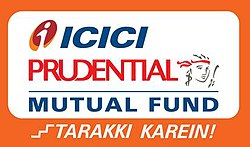Conservative Hybrid

1Y
SI
Nav
Risk

1Y
3Y
5Y
SI
Nav
Risk

1Y
3Y
5Y
SI
Nav
Risk

1Y
3Y
5Y
SI
Nav
Risk

1Y
3Y
5Y
SI
Nav
Risk

1Y
3Y
5Y
SI
Nav
Risk

1Y
3Y
5Y
SI
Nav
Risk

1Y
3Y
5Y
SI
Nav
Risk

1Y
3Y
5Y
SI
Nav
Risk

1Y
3Y
SI
Nav
Risk
To engage in investing need not necessarily entail assuming significant risks. Conservative Hybrid Funds provide a safe choice for those wanting stability and steady wealth growth. The funds seek to blend the safety of debt investments with the profit potential of stocks. This makes them appealing to investors who prefer low risk or are new to investing.
Let’s look at Conservative Hybrid Funds. We’ll cover how they work, who they suit, and their benefits and risks.
What is a Conservative Hybrid Fund?
A Conservative Hybrid Fund is a type of mutual fund that invests predominantly in fixed income or debt instruments, with a small portion allocated to equity and equity-related securities. These funds allocate around 75 to 90 percent of their portfolio to debt, while the remaining 10 to 25 percent is invested in equities.
By doing so, they aim to provide investors with regular income from debt instruments and capital appreciation from equity exposure. While not completely risk-free, these funds are considered low to moderately risky compared to equity or aggressive hybrid funds.
How Conservative Hybrid Funds Work
One of the principal strategies of a Conservative Hybrid Fund is to seek capital preservation and stable returns through investing in high-quality debt securities, which may include corporate bonds, government securities, and money market instruments. The latter category of instruments is characterized by predictable interest income and low risk.
Though the stock segment is minor, it is the most vital part of the fund. The fund manager endeavors to generate incremental returns by selecting stocks with the potential to appreciate over the next six months. At the same time, this mix allows the fund to both risk-manage more efficiently and also continue its chase of a return that is higher than that of traditional fixed-income products.
This fund is not passively managed but actively managed, which means the fund manager may have the liberty to change the distribution in case of occurrences of the change in interest rates, economic conditions, or stock market predictions, thus still being able to balance the approach.
Who Should Invest in Conservative Hybrid Funds
These funds are ideal for conservative investors who are not comfortable with full equity exposure but still want more than what traditional instruments like fixed deposits or recurring deposits offer. They are suitable for retirees, first-time investors, or anyone looking to generate regular income with moderate growth over the short to medium term.
If you are someone with a 2- to 4-year investment horizon and prefer capital stability with low volatility, a Conservative Hybrid Fund is a suitable option. These funds also work well for those transitioning from purely debt investments to market-linked products.
Advantages of Investing in Conservative Hybrid Funds
One of the most significant advantages of these funds is their low volatility, which is attributed to a high allocation to debt instruments. Even when markets are turbulent, the debt portion provides a cushion against significant losses, offering a level of protection to the overall portfolio.
The limited exposure to equity helps the fund beat inflation and generate better returns than traditional savings instruments over time. Although the equity portion may not be substantial, it still offers potential upside.
These funds offer diversification across different asset classes, which lowers overall risk. Investors benefit from professional fund management, where the fund manager constantly monitors market conditions and makes allocation changes as needed.
Conservative Hybrid Funds are generally more tax-efficient than fixed deposits when held for more than three years, thanks to indexation benefits available on long-term capital gains from the debt component.
Risks Associated with Conservative Hybrid Funds
Like all market-linked investments, these funds are not entirely risk-free. The equity portion, though small, is still subject to market volatility and can impact returns if the market underperforms during the investment period.
There is also interest rate risk affecting the value of debt instruments. When interest rates rise, bond prices tend to fall, which can result in short-term declines in fund value.
Another risk is credit risk, which occurs when a debt issuer fails to make payments. Although fund managers usually choose high-quality instruments, there's always a small risk that a bond issuer might fail to repay.
These funds may also carry liquidity risks, especially during stressed market conditions when specific instruments are more difficult to sell at fair value.
Taxation of Conservative Hybrid Funds
Since Conservative Hybrid Funds are debt-oriented, the taxation rules follow the norms applicable to debt mutual funds.
If the investment is held for less than three years, any capital gains are treated as short-term capital gains and taxed as per the investor's income tax slab.
If held for more than three years, the gains qualify as long-term capital gains and are taxed at a rate of 20 percent, with indexation benefits. Indexation helps reduce the taxable amount by adjusting the purchase price for inflation, making these funds more tax-efficient than fixed deposits.
Dividends, if chosen under the income distribution plan, are added to your taxable income and taxed according to your income slab.
Returns Expectations from Conservative Hybrid Funds
- Returns from these funds depend on market conditions, interest rate movements, and equity performance.
- On average, investors can expect returns in the range of 6% to 9% per annum over a medium-term horizon.
- While these returns may be lower than those of aggressive equity funds, they are generally more stable and predictable.
- The key is to stay invested for at least two to four years, allowing both debt and equity components to perform and minimize short-term market fluctuations.
How to Invest in Conservative Hybrid Funds
- Investing is simple and can be done online through mutual fund platforms, distributors, or directly from the fund house.
- Investors can choose between the growth and income distribution (dividend) options based on their goals.
- The growth option allows your investment to compound over time, making it ideal for wealth creation.
- The dividend option is suited for those seeking regular payouts.
Get In Touch
Interested in exploring more about JezzMoney Mutual Fund Distributors Software? Submit the form, and we will respond quickly.
Get Expert Advice on Investment in Mutual Funds!
- Certified mutual fund distributors around India will reach out to help you build your future.
- Connect with trusted mutual fund distributors and find them from your city and pincode area.
- JezzMoney is only the mediator to help you connect with these certified professionals.
- It is your obligation to gather accurate information when you receive contact from our platform.